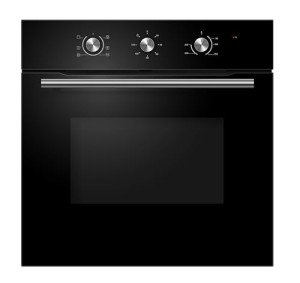Why Built In Electric Cooker Is Relevant 2024
Understanding Built-In Electric Cookers: A Comprehensive Guide
The modern kitchen has developed for many years, welcoming innovation that aims to streamline cooking while boosting efficiency. Among built-in oven and induction hob package that have gained appeal is the built-in electric cooker. This post explores the functions, benefits, and factors to consider when deciding for built-in electric cookers. It will also attend to common questions, offering a comprehensive check out their performance and influence on kitchen style.
What is a Built-In Electric Cooker?
A built-in electric cooker is an integrated cooking home appliance designed to fit effortlessly into kitchen cabinetry. Unlike freestanding models, these cookers are completely installed in the kitchen, offering a built-in aesthetic. They are available in different types, including ovens, hobs, and combination systems, and normally utilize electrical power as the main heat source.
Kinds Of Built-In Electric Cookers
The category of built-in electric cookers can be broken down into numerous classifications:
Type
Description
Built-In Ovens
Integrated cooking units used for baking, roasting, and so on.
Electric Hobs
Flat cooking surface areas with heating components for stovetop cooking.
Combi Ovens
Combination systems that work as both a microwave and a standard oven.
Steam Ovens
Ovens designed to cook food with steam, preserving nutrients and tastes.
Benefits of Built-In Electric Cookers
Built-in electric cookers use numerous benefits that make them a popular choice among property owners and cooking lovers alike. Here are some essential advantages:
Space Efficiency: Built-in electric cookers conserve counter space, making them ideal for smaller kitchens where making the most of space is crucial.
Aesthetic Appeal: These cookers supply a streamlined and refined aim to the kitchen. Their integrated design boosts the general cabinets, adding to a modern-day visual.
Improved Functionality: Many built-in electric cookers come with sophisticated features such as digital controls, self-cleaning choices, and wise technology for remote monitoring.
Improved Safety: Built-in designs typically have security features such as automobile shut-off and kid locks, making them safer in environments with kids.
Flexibility: From convection ovens to induction hobs, built-in electric cookers provide diverse cooking alternatives, accommodating different culinary requirements.
Considerations Before Installing a Built-In Electric Cooker
While built-in electric cookers bring numerous advantages, some considerations must be taken into account before buying:
Installation Requirements: Built-in cookers frequently require professional setup, which might consist of electrical modifications.
Expense: These designs typically come at a greater rate point than portable appliances, both for the units themselves and installation.
Limited Mobility: Once installed, built-in electric cookers can not be easily moved, which can be a disadvantage for those who might move frequently.
Compatibility: Homeowners need to make sure that their kitchen area supports the particular dimensions and electrical requirements of the cooker.
Setup and Maintenance
Appropriate setup and maintenance are crucial to make sure optimum efficiency and durability of built-in electric cookers. Here are some steps and suggestions:
Installation Process
Measurement: Measure the designated location in the kitchen to ensure the cooker fits appropriately. Think about the height, depth, and width of the device.
Electrical Setup: Check if existing electrical work meets the cooker's power requirements. This might include consultation with an electrician.
Ventilation: Ensure the kitchen has suitable ventilation if the cooker needs it.
Follow Manufacturer Instructions: Always comply with the manufacturer's installation instructions to avoid guarantee issues.
Upkeep Tips
Regular Cleaning: Keep the cooker clean by immediately wiping spills and food residues. Self-cleaning choices can also be used when available.
Inspect Seals and Gaskets: Inspect the door seals regularly to ensure they remain in great condition, preventing heat loss and enhancing performance.
Expert Servicing: Schedule expert maintenance checks to make sure all elements are functioning correctly and address any problems.
Regularly Asked Questions (FAQs)
What is the life-span of a built-in electric cooker?
The lifespan of built-in electric cookers normally ranges from 10 to 15 years, depending on use and maintenance.
Can a built-in electric cooker be fixed?
Yes, lots of built-in electric cookers can be fixed. Nevertheless, the repair costs can be significant, so it's important to weigh the cost of repair against replacement.
Are built-in electric cookers energy-efficient?
Built-in electric cookers can be energy-efficient, specifically designs with energy-saving features such as induction technology or wise heating components.
Do built-in electric cookers need particular cabinetry?
Yes, built-in cookers require to be set up in cabinets designed to accommodate them, ensuring correct ventilation and support.
How do I select the ideal built-in electric cooker for my requirements?
Consider your cooking habits, kitchen space, and desired functions. It's advantageous to read reviews and speak with kitchen home appliance professionals while deciding.
Built-in electric cookers represent a fusion of functionality and sophistication in modern-day kitchen design. They enhance the cooking experience while complementing the overall visual of the kitchen. As with any considerable appliance investment, understanding the advantages, factors to consider, and maintenance included is essential for making a notified decision. By incorporating a built-in electric cooker, property owners can change their culinary adventures and develop lasting impressions in their kitchens.
